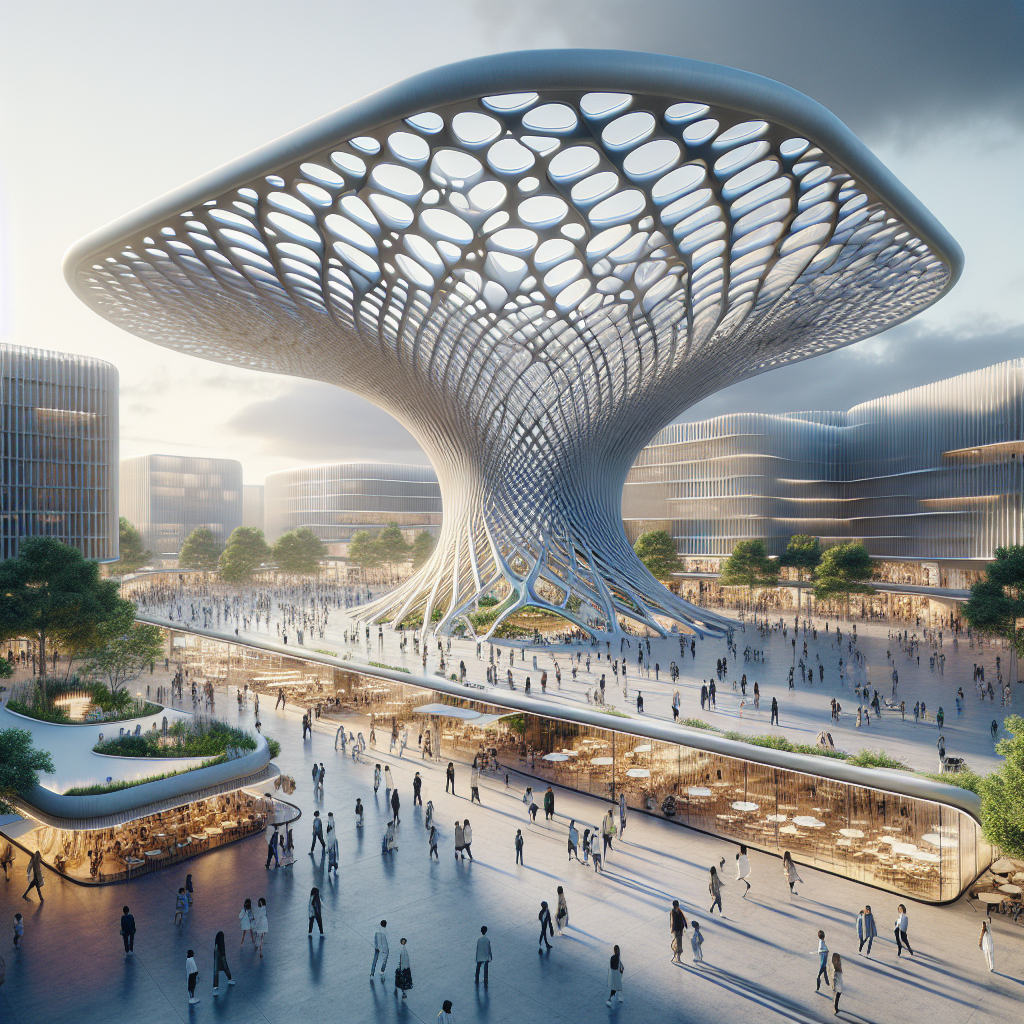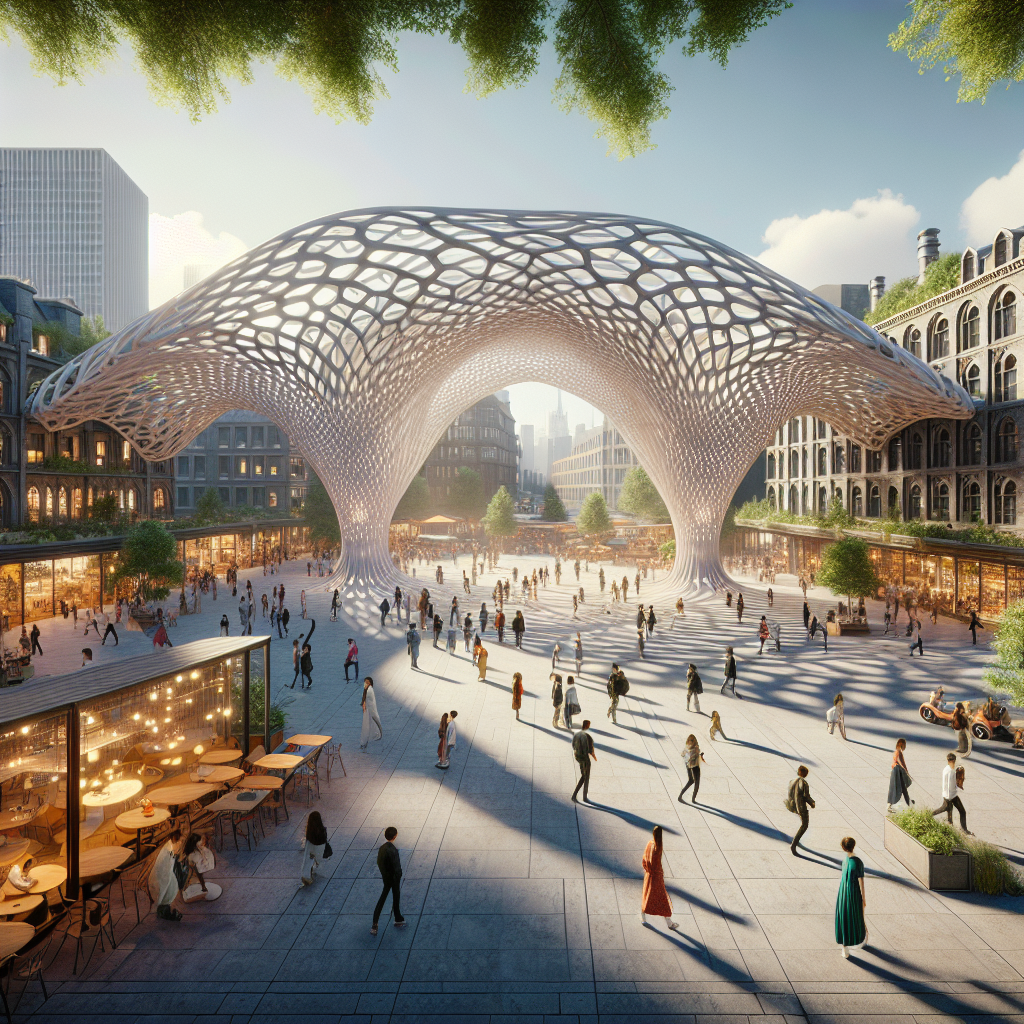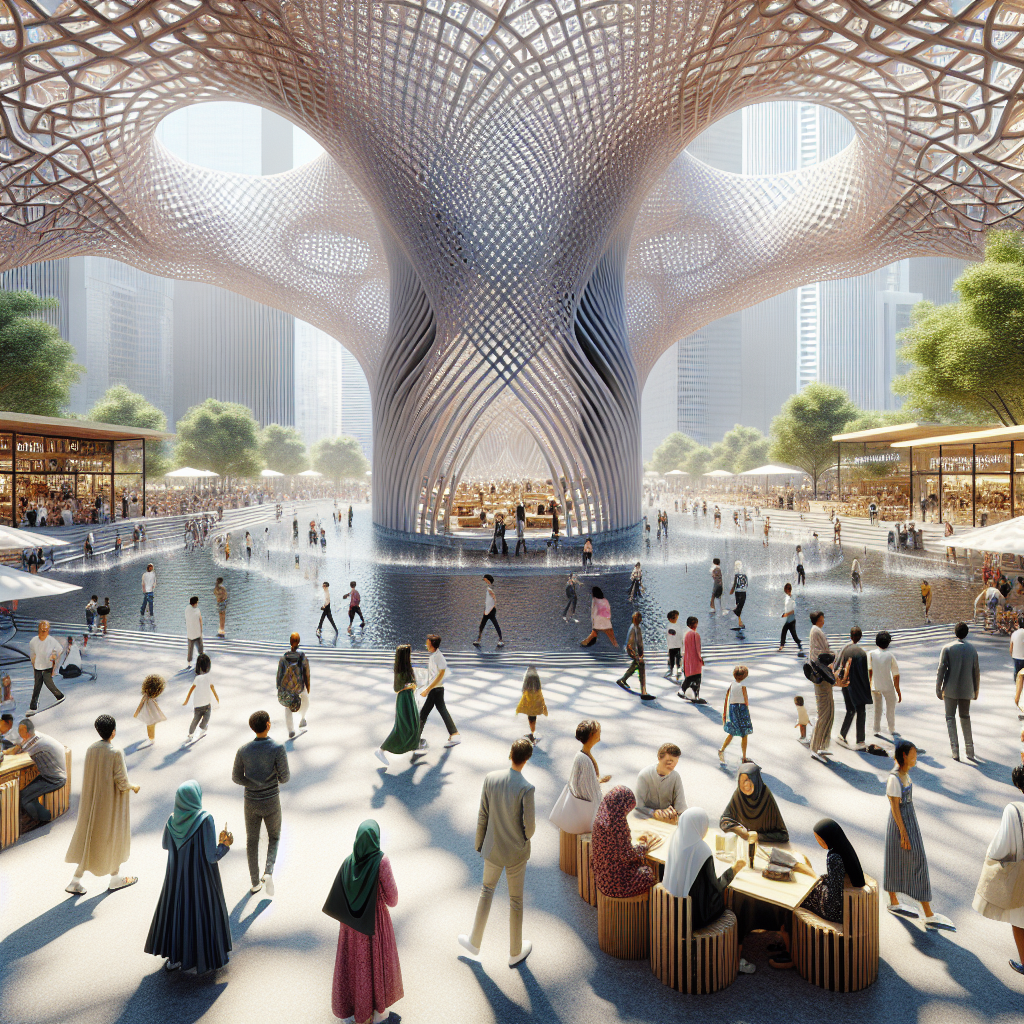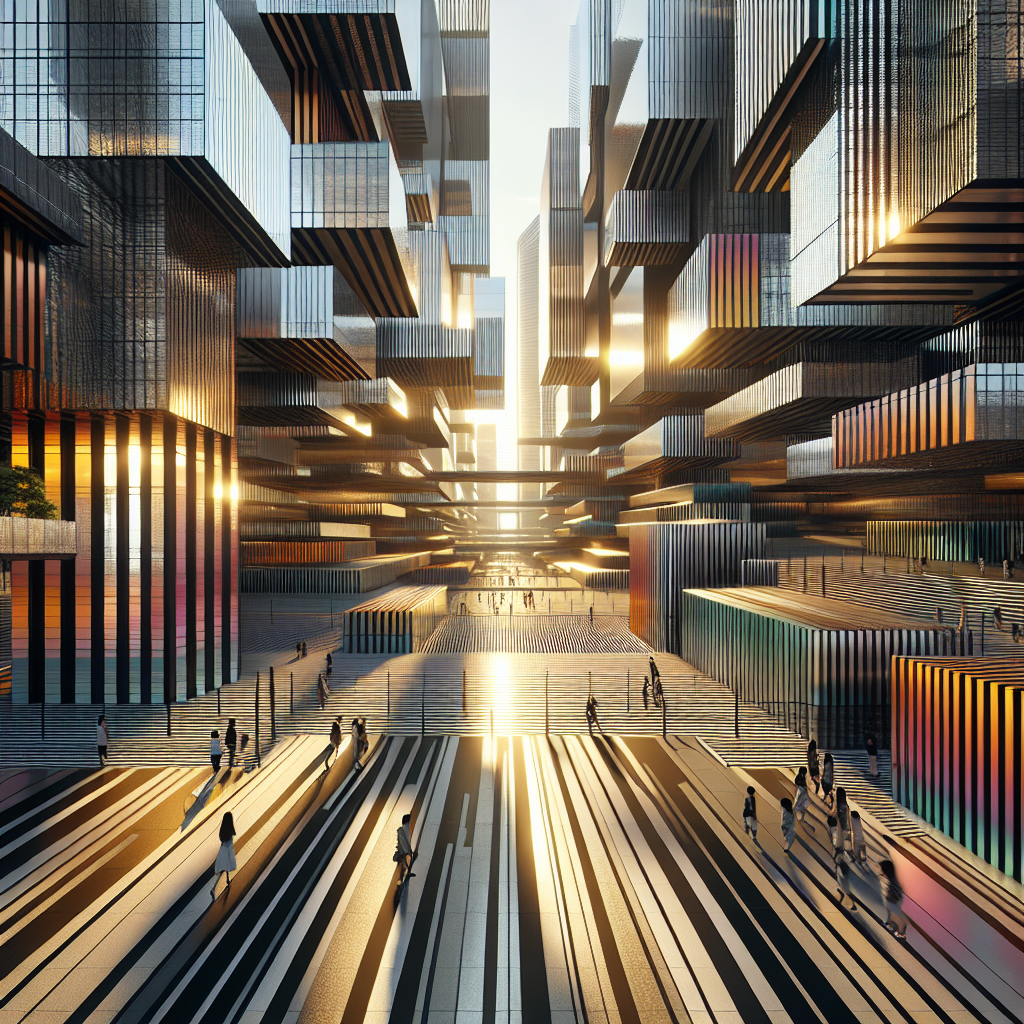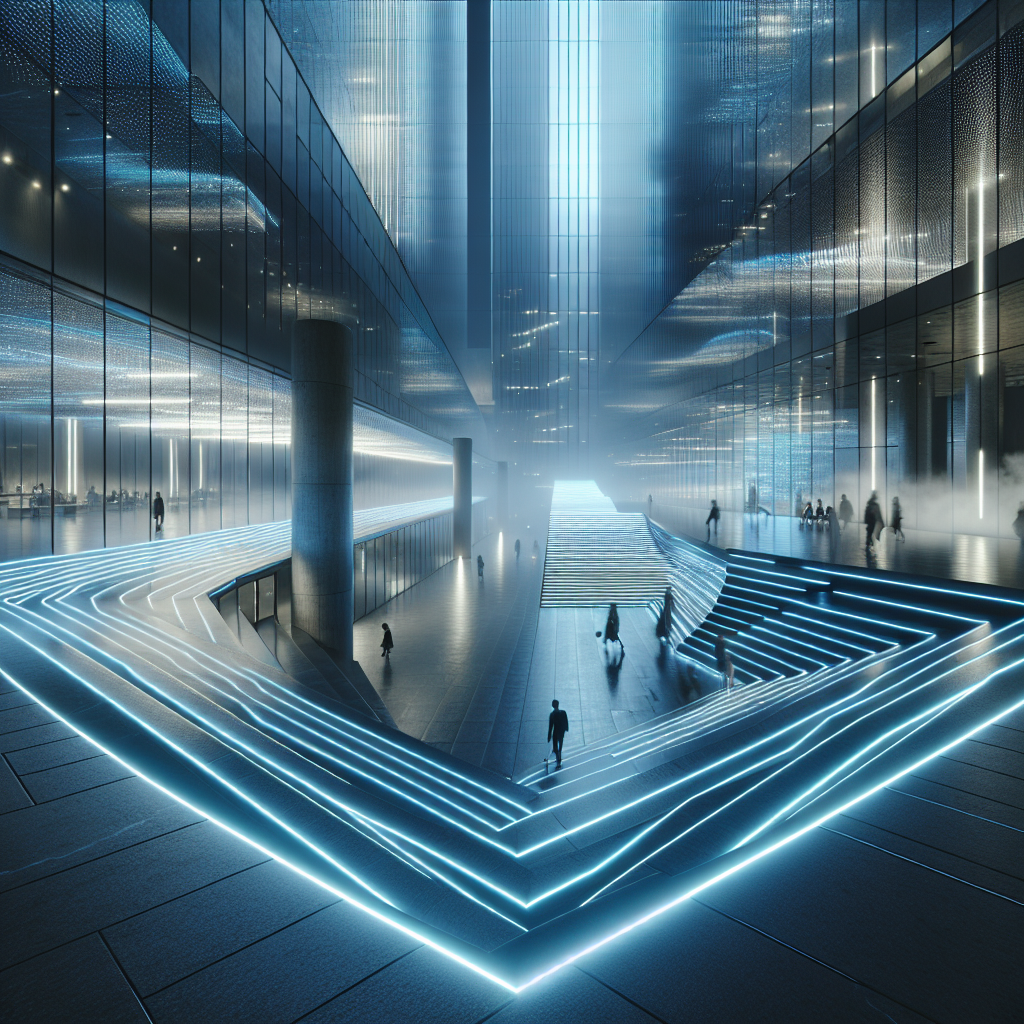Beyond the blueprint: orchestrating parametric pavilions in public squares
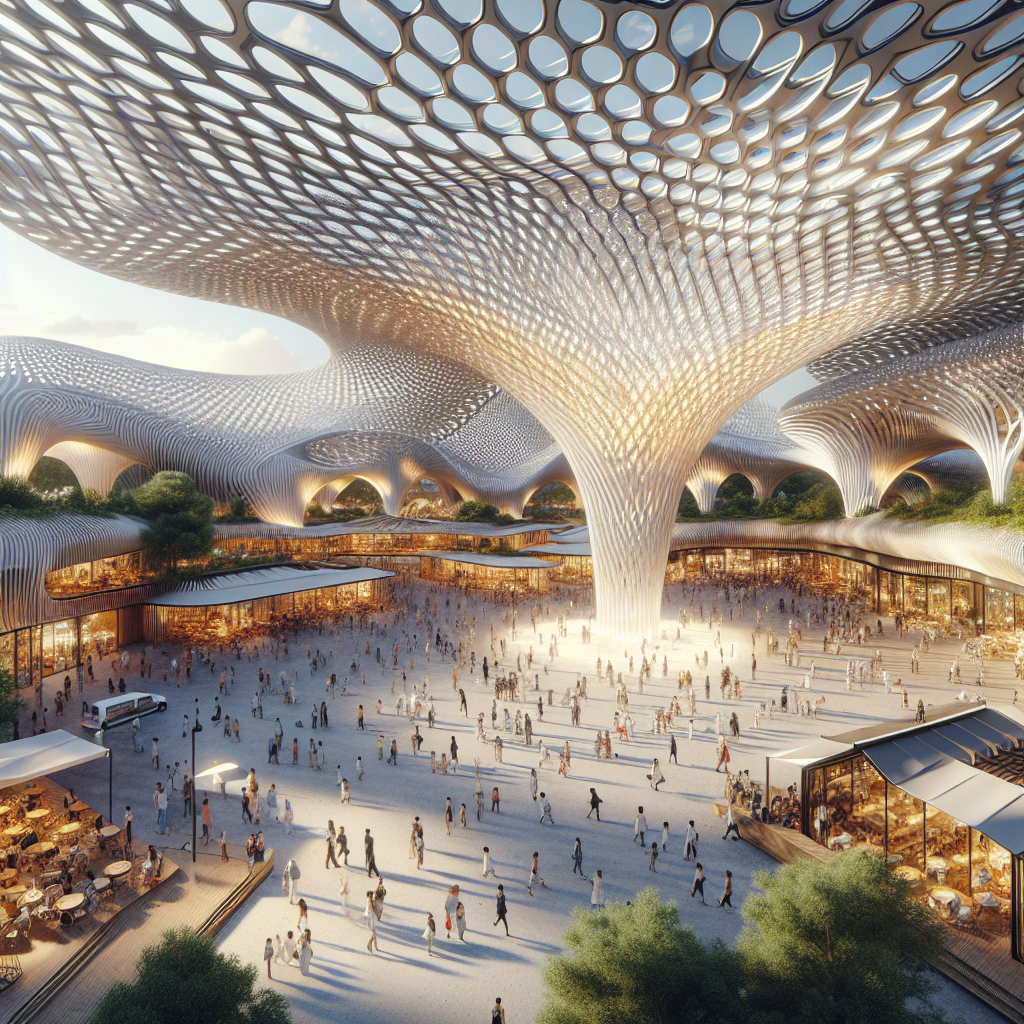
Beyond the Blueprint: Orchestrating Parametric Pavilions in Public Squares
In the heart of bustling urban squares, an architectural revolution is quietly unfolding. Parametric pavilions, sculpted through algorithms and digital fabrication, are redefining public spaces with fluid forms, dynamic structures, and interactive experiences. These innovative installations are not merely architectural novelties; they represent a profound shift in how we conceive, design, and inhabit our communal environments.
The Rise of Parametric Design in Public Architecture
Parametric design, an approach where algorithms and computational processes dictate form and structure, has transcended its initial experimental phase to become a prominent force in contemporary architecture. By manipulating parameters such as geometry, material properties, and environmental factors, architects create structures that are both visually captivating and functionally responsive. The result is a new breed of public pavilions that harmonize aesthetics with adaptability, reshaping our urban landscapes.
One notable example is the “Serpentine Pavilion” in London’s Hyde Park, a yearly architectural showcase that has featured parametric designs by luminaries such as Zaha Hadid and Bjarke Ingels. These pavilions exemplify how parametric architecture can create ephemeral yet impactful spaces that invite public interaction and contemplation.
Algorithmic Elegance: The Intersection of Form and Function
Parametric pavilions are characterized by their fluid, organic forms, often inspired by natural phenomena. The intricate lattice structures, undulating surfaces, and complex geometries that define these installations are made possible through advanced computational tools and digital fabrication techniques. This synergy between technology and creativity allows architects to explore forms previously unattainable through traditional methods.
Consider the “Metropol Parasol” in Seville, Spain, designed by architect Jürgen Mayer. Known locally as “Las Setas” (The Mushrooms), this expansive wooden structure is the world’s largest timber-framed parametric pavilion. Its honeycomb-like canopy provides shade, houses markets and cafes, and integrates seamlessly into the urban fabric, demonstrating how parametric design can enhance both functionality and urban aesthetics.
Public Engagement through Interactive Parametric Installations
Beyond their striking visual appeal, parametric pavilions often incorporate interactive elements that engage visitors on multiple sensory levels. Through responsive lighting, kinetic components, and adaptive acoustics, these installations transform passive observers into active participants, fostering a deeper connection between people and their surroundings.
In Amsterdam’s Museumplein, the “Lightweave Pavilion” exemplifies this interactive potential. Utilizing parametric algorithms, the pavilion’s LED-embedded fabric responds dynamically to visitors’ movements, creating a mesmerizing interplay of light and shadow. Such installations not only enrich public spaces but also encourage social interaction and communal experiences.
Sustainability and Material Innovation in Parametric Structures
Parametric design is also at the forefront of sustainable architecture, leveraging computational optimization to minimize material waste and maximize structural efficiency. By precisely calculating load distributions and material usage, architects can create lightweight yet robust structures that reduce environmental impact.
Recent advancements in sustainable materials, such as biodegradable composites and reclaimed resources, further enhance the ecological credentials of parametric pavilions. For instance, the rise of timber in high-rise construction, explored in depth in our previous article on wooden skyscrapers, underscores how renewable materials can be effectively integrated into parametric designs.
Parametric Pavilions as Catalysts for Urban Revitalization
Strategically placed parametric pavilions can act as catalysts for urban renewal, transforming underutilized or neglected public squares into vibrant community hubs. These installations often become iconic landmarks, attracting visitors, stimulating local economies, and fostering civic pride.
A compelling example is the “Urban Bloom Pavilion” in Seoul, South Korea. Designed through parametric algorithms inspired by blooming flowers, this installation revitalized a previously overlooked urban square, turning it into a popular gathering spot. The pavilion’s intricate structure, crafted from recycled aluminum panels, demonstrates how parametric design can blend beauty, sustainability, and social impact.
Future Trends: The Integration of AI and Advanced Fabrication
Looking ahead, the integration of artificial intelligence (AI) and advanced digital fabrication techniques promises to further revolutionize parametric pavilion design. AI-driven algorithms can analyze vast datasets, optimizing designs for environmental performance, user interaction, and structural integrity. Coupled with cutting-edge fabrication methods such as 3D printing and robotic assembly, architects will be empowered to create increasingly sophisticated and adaptive public installations.
Our exploration of AI in architecture highlights how these technologies are already reshaping the design process, enabling architects to push the boundaries of creativity and innovation.
Challenges and Considerations in Parametric Pavilion Design
Despite their numerous advantages, parametric pavilions present unique challenges. The complexity of their designs often requires specialized expertise, advanced fabrication facilities, and significant investment. Additionally, ensuring durability and ease of maintenance in public settings demands careful consideration of materials and construction methods.
Architects and urban planners must also navigate regulatory frameworks and community expectations, balancing innovation with practicality. Nevertheless, as parametric design becomes more mainstream, these challenges are increasingly being addressed through collaborative approaches and technological advancements.
Parametric Design as a Reflection of Cultural Identity
Parametric pavilions can also serve as powerful expressions of cultural identity, reflecting local traditions, histories, and values through contemporary architectural language. By integrating culturally resonant motifs and materials, architects create installations that resonate deeply with communities, fostering a sense of belonging and collective memory.
For example, the “Sandwaves Pavilion” in Saudi Arabia, designed by Precht Architects, draws inspiration from traditional desert architecture and local sand formations. Crafted using innovative sand printing technology, the pavilion embodies a harmonious blend of heritage and innovation, illustrating how parametric design can celebrate cultural identity while embracing modernity.
Embracing the Parametric Future
As parametric pavilions continue to proliferate in public squares worldwide, they represent more than mere architectural experiments—they embody a transformative vision for urban design. By harnessing computational power, material innovation, and interactive technologies, architects are crafting public spaces that are dynamic, sustainable, and deeply human-centric.
In an era marked by rapid urbanization and environmental challenges, parametric design offers a compelling pathway toward more resilient, inclusive, and inspiring urban environments. As we move beyond traditional blueprints into the realm of algorithmic orchestration, the possibilities for redefining our public squares are limited only by our imagination.
For further insights into how design can shape our future cities, explore our analysis of technology’s impact on futuristic city design and the potential of biophilic design to enhance human well-being.
As we stand at the intersection of technology, creativity, and community, parametric pavilions invite us to reimagine the very essence of public architecture—beyond the blueprint, toward a future defined by innovation and connection.
